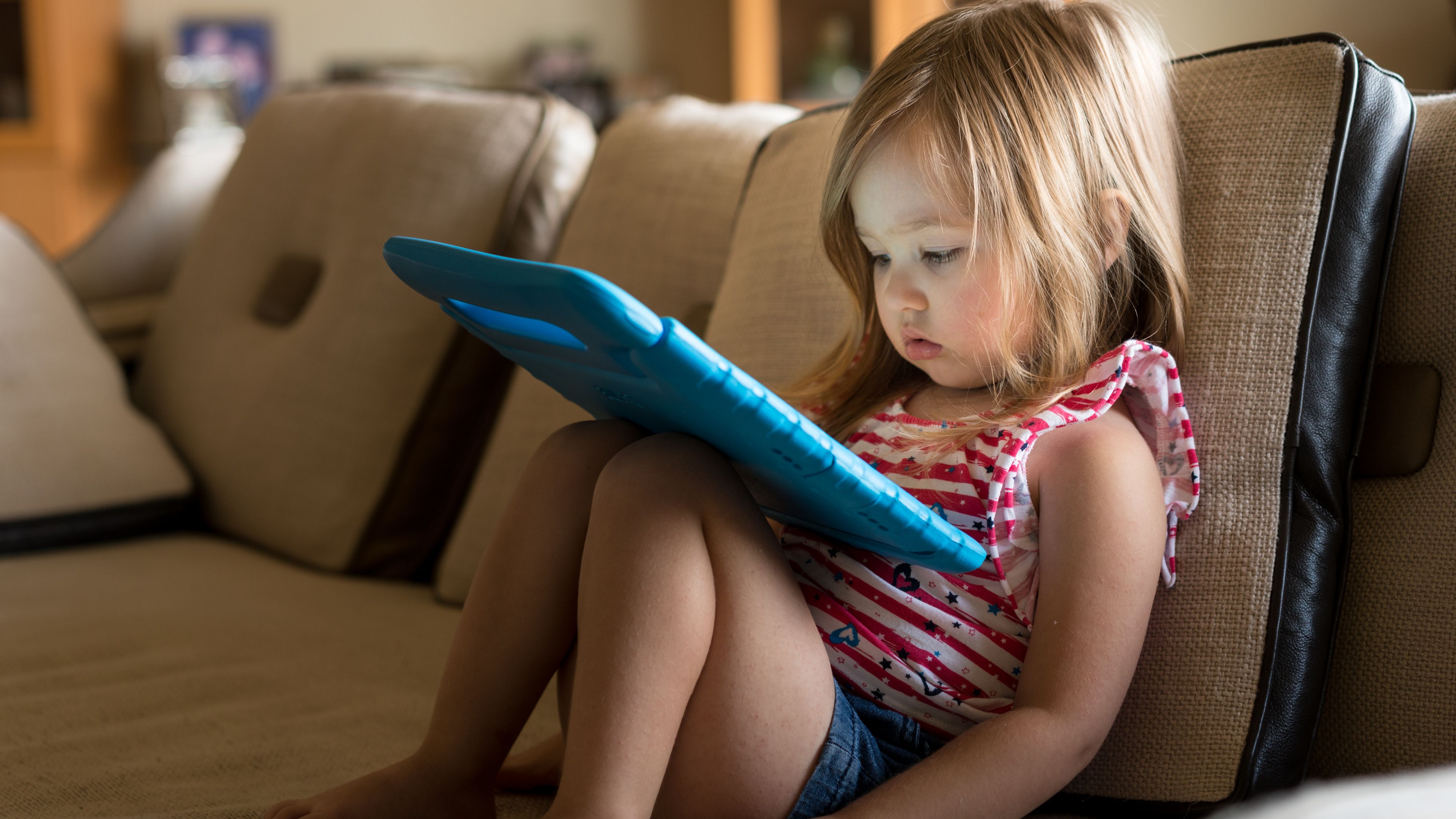Top Five Tips for Balancing Technology in Your Home

Welcome back to our Top 5 Parenting Series. The previous posts in this series include ‘Top 5 Rainy Day Ideas for Parents’, ‘Top 5 Tips for Creating Better Sleep for Your Child’, ‘Top 5 Tips for Raising Independent Children’, ‘Top 5 Tips for Improving Picky Eating’, and ‘Top 5 Tips for Building Family Bonds’. In this post, our sixth post in the series, we will explore tips for balancing the use of technology within your home.
Balancing the use of technology for kids within the home is a crucial aspect of modern parenting. In an era where screens dominate our daily lives, striking a healthy balance between technological exposure and real-life experiences is essential for the well-rounded development of our children. This article explores the potential benefits and risks of excessive screen time and offers practical tips and strategies for parents to ensure a harmonious coexistence between technology and other activities in their children's lives. By cultivating a balanced approach, we can provide our children with the necessary tools to navigate technology responsibly and thrive in a digitally driven world.
Tip #1: Set time limits

Setting time limits is one of the best things parents can do to create boundaries around technology.
In today's digital age, setting time limits on technology use for kids has become more important than ever. With the constant presence of screens in our daily lives, it is crucial for parents to establish boundaries to ensure a healthy balance between technology and other activities. Research has shown that excessive screen time can have negative effects on children's physical and mental well-being. By setting limits, parents can encourage their children to engage in a variety of activities, such as outdoor play, reading, and creative pursuits, which promote holistic development.
Even if you choose to set no additional boundaries around screen time, limiting the amount of time your child spends on screen each day is key. In our house, our girls do not get any screen time on school days and it is limited to about an hour on the weekends- if at all. There are some exceptions to this limit such as any sports we turn on the tv in the evening if we are home or if we choose to have a family movie night. Our girls do have tablets which they are allowed to use unlimited during long travel (such as over a two-hour trip), but this is not a common occurrence- especially during the school year.
As an article on the American Academy of Child and Adolescent Psychiatry’s website states “Your child is never too young for a screen-time plan.” They go on to share guidelines for various ages:
- Until 18 months of age limit screen use to video chatting along with an adult (for example, with a parent who is out of town).
- Between 18 and 24 months screen time should be limited to watching education programming with a caregiver.
- For children 2-5, limit non-educational screen time to about 1 hour per weekday and 3 hours on the weekend days. 1
They go on to share additional ages and their recommendations for appropriate screen time use.
Tip #2: Establish additional boundaries

In addition to setting time limits for technology use, consider setting additional boundaries.
It continues to become increasingly important for parents to establish clear boundaries when it comes to their children's use of technology. It is crucial for parents to strike a balance between allowing their children to explore the benefits of technology and ensuring that they engage in real-life experiences and activities.
Setting time limits is a great place to start setting boundaries with technology for your child as was mentioned in Tip #1, but that isn’t the only way a parent can establish technology boundaries. Establishing screen free spaces and times such as the table and a minimum of time before bedtime are great ideas as well. The same article on American Academy of Child and Adolescent Psychiatry’s website provides additional screen time boundaries:
- “Turn off all screens during family meals and outings.
- Learn about and use parental controls.
- Avoiding using screens as pacifiers, babysitters, or to stop tantrums.
- Turn off screens and remove them from the bedroom 30-60 minutes before bedtime.” 1
Tip #3: Set a good example

As parents, we have an enormous responsibility in shaping our children's relationship with technology.
Setting a good example for children in using technology wisely is crucial. Parents play a vital role in shaping their children's behavior and attitudes towards technology, making it essential for them to demonstrate responsible and mindful technology use themselves. By modeling healthy and balanced screen time habits, parents can instill in their children the importance of moderation, time management, and digital well-being. Moreover, when parents actively engage in offline activities and quality time with their children, they show that technology is just one part of a well-rounded and fulfilling life.
As a mom, I try extremely hard to show my children that I have boundaries with my own technology. When working from home, I set boundaries with my working hours and my working space. When texting friends and being in touch with family, I set boundaries on time spent on my phone and try to choose times when my kids aren’t around.
Tip #4: Encourage physical activity

While teaching our children about technology, we are also responsible for teaching them the value of real-life experiences.
In addition to striking a healthy equilibrium between technology use and real-life experiences, it is crucial for parents to encourage physical activity as a means of balancing the impact of excessive screen time on their children's well-being. Regular physical activity not only promotes a healthy lifestyle but also enhances cognitive development and social interaction. By engaging in outdoor play, sports, and other physical activities, children can develop their motor skills, improve their concentration, and reduce the risks associated with sedentary behavior. Encouraging physical activity not only creates a much-needed break from screens but also fosters a well-rounded development in children, ensuring that they thrive in a digitally driven world.
My girls spend at least 5 days per week at a variety of organized sports practices and games. That is not the only way to encourage your child to move their body though! Not every schedule allows for organized practice time and not every child enjoys sports. Going to the park together, walking the dog, or riding bikes together are all ideas that get your child moving and balancing their technology use.
Tip #5: Talk to your child about the need for balance

Having open and honest conversations with your children about the postives and negatives of technology can help them understand the need for boundaries and balance.
One of the key aspects of guiding children's technology use is having open and honest conversations about the importance of maintaining a balanced approach. By talking to our children about the benefits and risks of excessive screen time, we can help them understand the need to find a healthy equilibrium between technology and other activities. It is important to emphasize that technology can be a valuable tool for learning, communication, and entertainment, but it should not overshadow real-life experiences. By fostering a dialogue about the value of balance, we can empower our children to make informed decisions about their technology use and encourage them to prioritize other activities as well.
I am a huge advocate of honest conversations with kids. Recently my almost 9 year old has started asking for a phone. We’ve spent a lot of time talking about why she thinks she needs one. I’ve shared my opinions and my stance as her mom with her about why I think she is too young and my concerns with what a phone offers a young child. By having these conversations, I think she understands more about where I am coming from as a parent and while she will certainly say she doesn’t necessarily agree with all of my opinions, she is respectful of them. An article on Common Sense Media’s website shares some conversations to have with older kids about their screen time use but some of these could be used with younger children. These conversation points include “Help them recognize their screen time habits” and “Talk about their emotional health.” 2
Balancing technology use for our children within our homes is a new age problem many parents are actively trying to navigate. This is a challenge that is new to the last generation of parents with the more recent explosion of technology in our lives. We’ve reviewed our top five tips for navigating this balance, but we would love to hear what your family does to help strike the healthy balance of technology use and real-life experiences for your kids.
Sources:
1. AACAP. American Academy of Child and Adolescent Psychiatry, Feb. 2020, www.aacap.org/AACAP/Families_and_Youth/Facts_for_Families/FFF-Guide/Children-And-Watching-TV-054.aspx.
2. “4 Conversations to Have with Older Kids and Teens about Their Scree...” Common Sense Media, 15 Mar. 2022, www.commonsensemedia.org/articles/4-conversations-to-have-with-older-kids-and-teens-about-their-screen-time-habits#:~:text=Help%20them%20recognize%20their%20screen%20time%20habits.&text=Maybe%20screen%20time%20interferes%20with,to%20get%20the%20conversation%20going.

